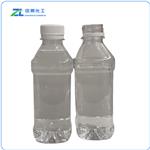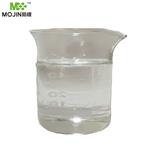Chemical Properties
Dihydromyrcenol is a colorless liquid with a
fresh citrus-like odor and a lavender note. It is obtained from 3,7-dimethyl-1,6-
octadiene (citronellene), the pyrolysis product of cis-pinane and can be prepared by three different processes: (i) by addition of hydrogen chloride and
subsequent hydrolysis of the resulting 2,6-dimethyl-2-chloro-7-octene; or
(ii) by addition of formic acid and subsequent saponification of the resulting
dihydromycrenyl formate; or (iii) by direct hydroxylation with 60–80%
sulfuric acid.Dihydromyrcenol is used in fine fragrances as well as in soap and detergent perfumes
for fresh lime and citrus-like floral notes.
Occurrence
Found in the leaf oils of Barosma venusta and in the oil of hops (Gildemeister & Hoffman, 1960)
Uses
Dihydromyrcenol is used in the fragrance industry for its fresh lime and citrus-like odor.
Dihydromyrcenol is a fragrance ingredient used in cosmetics, fine fragrances, shampoos, toilet soaps, and other toiletries as well as in non-cosmetic products such as household cleaners and detergents. Its worldwide use is greater than >1000 metric tons per year (IFRA, 2004). A colorless, somewhat viscous liquid that is a mixture of approximately 50% 2,6-dimethyl-7-octen-2-ol and 50% 2,6-dimethyl-7-octen-2-yl formate. It has apparently not been reported to occur in nature.
Uses
Dihydromyrcenol was used in the synthesis of bioamphiphilic polymers based on the hydrophilic dextran and the hydrophobic terpenes as renewable resources.
Preparation
Dihydromyrcenol is prepared by adding hydrogen chloride to myrcene followed by hydrolysis under mild conditions.(Bedoukian, 1967)
Definition
ChEBI: A monoterpenoid that is oct-7-en-2-ol substituted by methyl groups at positions 2 and 6 respectively.
General Description
Methoxycarbonylation of dihydromyrcenol catalyzed by [PdCl
2(PPh
3)
2]-SnCl
2·2H
2O-2PPh
3 has been investigated. Dihydromyrcenol is a widely used fragrance ingredient and has been evaluated for developmental toxicity in pregnant Sprague-Dawley rats.
Flammability and Explosibility
Not classified
Solubility in organics
Practically
insoluble in water, soluble in alcohol and oils.





